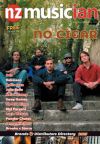Guitar Cool: Major Scale Workout
Guitar Cool: Major Scale Workout
The major scale is like the DNA of music because everything we do in music relates back to it in some way. Knowing the theory and application of major scales is very important, but I won’t get into any of the theory here, just the application.
The ability to master major scales is a huge undertaking for many guitarists because there are so many different ways we can play them and this lesson will only be scratching the surface of this vast area.
Many players use scales for building technique, warming up before a practice session or a performance, soloing, etc. No matter how you are going to use them, a good solid foundation of all the major scales covering the whole guitar neck is required. Although I can’t go over them in all keys here, this lesson stays in the key of C major and is just to get you started or moving ahead further.
Having the ability to know and play these scales well doesn’t come overnight, it takes time and all players need to be patient in the quest of mastering them. It is best to begin by not using any tempo at all while getting your fingertips to slowly go on the right notes and get a good sound.
Exercise 1 is the C major scale in open position and is the one everyone learns when they begin playing guitar.
Exercise 2 is the scale played along the second string. Playing along one string is a valuable lesson because it teaches you to think horizontally instead of the vertical fashion across strings. I have left the fingering out of the diagram because there are a few different ways you can do it. My favourite is to use fingers 1, 2, 3, 4, for the first four notes, then the same again for the second four notes. You could also use fingers 1 and 3 slide with your 3rd finger to the 3rd note and play the 4th note with your pinky, then same again for the next four notes.
Exercise 3 is similar to the previous one and plays along the 5th string.
Exercise 4 can be a difficult one if you have haven’t been playing long, but is well worth the study. It is the scale played from a root note on each string. Obviously you can’t play across strings when you get to the 1st string so you have to play along that string. It is best to play one finger per fret for this one.
Exercise 5 is the scale with displaced fingerings and open strings to give a totally different sound. It is a bit difficult to play accurately for the picking hand, but well worth the practice. This type of playing should hopefully open up your musical mind a bit.
Exercise 6 is similar to the previous, but played in a different position.
Exercise 7 uses what we call displaced octaves in that you play certain notes of the scale down one octave instead of in the octave of the moment. This creates some great sounds which you hear regularly on recordings.
Take your time learning these new ways to play major scales. Once you have them in your head and under your fingers, then it is time to transpose them to different keys – that is when the fun really starts.
Kevin Downing is a professional guitarist, teacher, and author based in Palmerston North. He can be contacted at Kevin@guitar.co.nz or phone (06) 357 0057. www.guitar.co.nz

